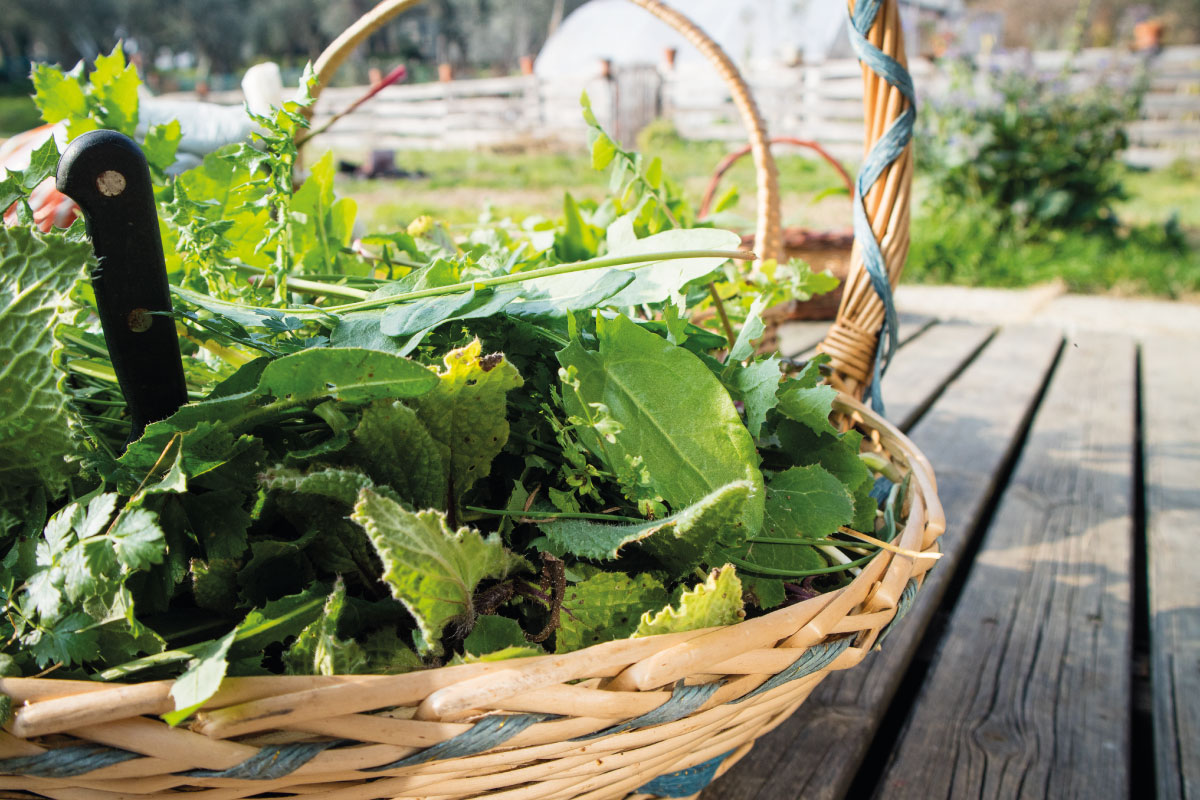
24 Oct Spontaneous herbs: the project against waste by Altamura OP with La Capra Selvatica
The term “wild grass” indicates a plant that grows without any cultivation activity. These herbs, in fact, are born, grow and reproduce in a completely autonomous way in the soil that hosts them thanks to the nutritional elements contained in it. Another factor that conditions its growth is the microclimate of the surrounding area: each geographical area, in fact, has its own specific group of spontaneous herbs that grow precisely by virtue of the favorable climatic conditions characteristic of that place. Let’s see which are the most common and the properties that distinguish them.
Spontaneous herbs: properties and benefits
Many wild herbs are edible: in fact, in popular cuisine these plants were collected and used as recurring food on the tables. Furthermore, most of the spontaneous herbs are among the officinal herbs, because they contain active ingredients used for therapeutic purposes. It should be emphasized, however, that not all wild herbs are edible and medicinal: some, in fact, are inedible. Therefore, to handle them it is essential to know them thoroughly and to know how to distinguish them.
Italy, thanks to its important biodiversity, has a wide variety of spontaneous herbs that embellish its already unique natural heritage and the catering sector – and gastronomy in general, among those that evolve at a faster pace, following the changes in society or, in some cases, dictating them itself – he has been aware of this for some time. Spontaneous herbs, for some years now, have been rediscovered as a real trend also in quality cuisine that is strongly focusing on the vegetable theme: in fact, there are many chefs who have decided to study them carefully and select them as delicious ingredients for your dishes. This is mainly due to two factors:
- the intention to move towards a cuisine increasingly linked to its territory, made up of zero kilometer and research of raw materials with the exaltation of the so-called “poor” elements;
- attention to sustainability and circularity, limiting not only waste but above all waste, giving it a new purpose.
Spontaneous herbs: which are the most common
Here is a small list of some of the most common and widespread spontaneous herbs in the Italian territory:
Borage: its seeds are rich in polyunsaturated fatty acids, borage is also used as an anti-inflammatory and is useful for the cardiovascular system.
Chicory: perennial plant with light blue flowers, effective against drowsiness and beneficial for the kidneys and liver.
Portulaca: herb with a high omega-3 content and widely used in cooking in mixed salads.
Nettle: it has edible leaves if cooked properly and, in agriculture, it has anti-parasitic effects.
Wild rocket: it grows mainly in inaccessible places and is consumed in salads or on pizza.
Dandelion: also known as dandelion, it is rich in minerals, vitamins A, C, E and proteins.
Plantain: perennial plant widespread in the countryside, it contains many tannins, flavonoids, phenolic acids, saponins, mineral salts and other useful natural substances that are anti-inflammatory, expectorant and healing.
Amaranth: of South American origin but then spread to various parts of Europe, it contains mineral salts, calcium, iron, vitamin A and C.
Farinello: its properties are similar to those of spinach and, in some respects, even better (for example, farinello contains more iron). The younger leaves are also rich in phosphorus, potassium and vitamin B1.
From waste to resource: the Altamura OP project
At Altamura OP, the always great attention to sustainability also passes through actions aimed at reducing waste and scraps.
In fact, Altamura OP has recently started a collaboration with La Capra Selvatica, a well-known Instagram influencer who has recently starred in a column on Rai 2 within the program Almanacco conducted by Drusilla Foer – aka Emanuele Cavaiolo, botanist, agronomist and vegan forager (collector of wild plants), scholar of the biological and structural aspects of plants and vegetable consultant from seed to plate – in order to identify the wild herbs that grow in the various farms of the group located throughout the territory.
From this study, several totally edible species were identified, such as purslane, farinello, amaranth.
Hence the idea of identifying, selecting, collecting and packaging them in a mix that will take the name of Wild Mix, accompanied by the nice payoff “grazed and selected by La Capra Selvatica”.

This project, to which the company particularly cares, aims to convert waste into a real food resource: in fact, spontaneous herbs are often uprooted and thrown away, with the consequent use of resources for their disposal, and therefore also of consumption. A project, therefore, highly sustainable and at times visionary, which intends to go as far as raising awareness of the use of these vegetables in daily nutrition.
The wild mix will be on sale next November.
For info and marketing info@opaltamura.com
